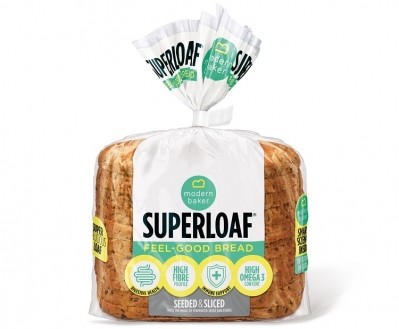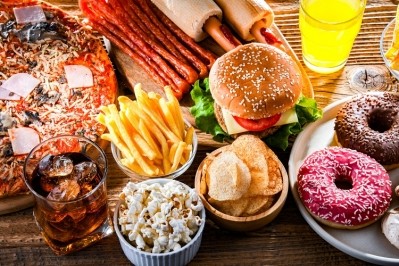Why a UPF tax would be near impossible and ineffective

A recent survey of UK consumers claimed most Brits want a tax on junk and ultra-processed food manufacturers, believing it would help tackle the obesity crisis.
Consumers in the UK have an apparently growing vendetta against UPF, with near two-thirds (62%) of them telling a Health Foundation survey unhealthy food advertisements should be banned from TV and online before 9pm, as well as 53% of them demanding a tax on UPF makers.
But it’s not only Brits. EU consumers also villainise UPFs, with 67% believing they contribute to rising obesity levels and other health issues, according to a recent EIT Food Consumer Observatory survey.
EU citizens are also less trusting of UPFs in general, with 40% saying the industry isn’t regulated enough and 67% not liking it when their foods contain unrecognisable ingredients.
So, if one was implemented, how would a tax impact manufacturers? And would it help slim down consumers’ waistlines?
Who would police a UPF tax?
Launching a UPF tax would be difficult to manage and unlikely to settle consumer concerns, according to Danny Butt, director of consultancy Food Innovation Solutions. “If you’re talking at a macro level, as a tax, it could be similar to the sugar tax [in the UK], so if it’s built in line with that then you have a situation where some brands have to cost reduce or absorb [the tax].”
However, the increased cost of living has already led to product price hikes, while retailers are also reluctant to pass on additional costs to customers. “But the impact would be specific to the brands, so a company like Coke could put prices up because they are a market leader, but private label and smaller businesses wouldn’t be able to stomach it,” he continues.
And then there’s the continuing debate around what a UPF is. Consumers often consider UPFs to be high fat, salt and sugar junk foods, “but when you tell them it’s also their charcuterie in the fridge, their views change”, says Butt, “they don’t want foods like those to be taxed”.
A world first UPF tax
A UPF tax has been enforced in Columbia for some months now. Considered to be the world's first, in 2023 Colombia enforced a tax of 10% on certain UPF foods, increasing to 15% this year with the expectation it will rise to 20% by 2025.
The tax has reportedly already had a mild effect on UPF consumption, with sales down 5% by the end of 2023, Kantar data showed.
Colombia has not used the Nova system to define which foods are subject to the UPF tax. Instead, it has implemented a threshold system covering salt, sugar and saturated fats.
Milk products with added sugar, sausages, cold cut meats, confectionery, snack, bakery and several other food types have all been included in the tax. However, traditional Colombian cuisines are exempt, including dulce leche and salchichon.
“There are a range of issues with a UPF tax,” says Klaus Grunert, EIT Food Consumer Observatory director and professor at Denmark’s Aarhus University. “There is no clear definition of what a UPF is. There needs to be a definition of what it is, but that is for regulators who would draw on expertise from nutritionists.”
If a tax were to be implemented, Grunert suggests it could be based on the level of excessive negative nutrients a product contains, rather than the level of processing used to produce it. “But in Denmark, for a short period [in 2011], we had a tax on saturated fat that didn’t survive [and was repealed in 2012] due to all sorts of practical issues,” he concedes. Butt, however, suggests using a traffic light system.
Professional bodies and food industry stakeholders already utilise rough definitions for the levels of food processing using the Nova classification system. It places foods into categories by degree of processing, such as unprocessed, processed ingredients, processed foods or ultra-processed foods. But it has been criticised for not specifying what UPF is ‘healthy’ or ‘unhealthy’ and for relying on the levels of processing and not nutrition levels.
Do consumers know what UPF is?
There is currently no official agreement on what a UPF of concern might be or how it would be categorised in terms of ‘good’ and ‘bad’.
And with that, there is a need for consumer education around UPF as a whole, but as both Butt and Grunert highlight, it’s not a linear story. “People have to make their own call and that all starts with education,” Butt explains. “Yet sometimes even a little information is often more dangerous than no information,” he adds, pointing out that national and international news coverage often lumps only junk food into the UPF category, when it’s a much bigger picture than that.
A lack of consumer education around UPF is a big issue, a point surfaced by multiple data sets in recent months. In the EIT Food Consumer Observatory study, consumers found it difficult to place foods into the Nova classifications, showing a lack of knowledge.
“Unless something [robust] is put in place, then the debate [of what UPF is] continues to go round in circles,” says Butt. “When you’re dealing with consumers, they can’t differentiate between an additive or a ‘nasty’.
“Unless someone weighs in with a sensible decision, then there will be no unbiased, useful rule to work with. But, the industry needs to do a better job of communicating what processes are used.”
When it comes to UPF policing, both Butt and Grunert agree it’s the job of governments. And while there may be a reluctance from governments to take account of it now, as the debate and demonising of certain foods grows, they may want to soon to ensure manufacturers can work to clear frameworks.




















